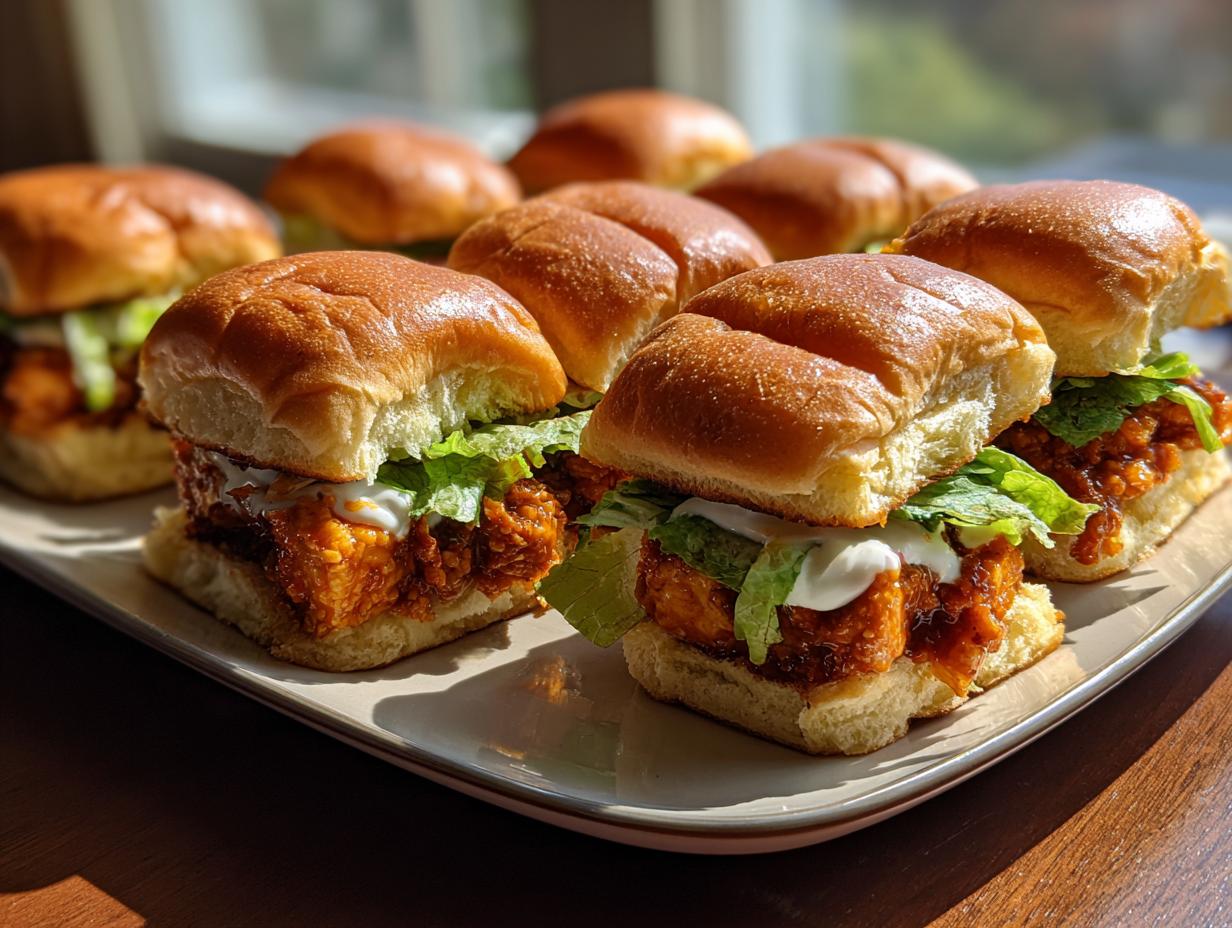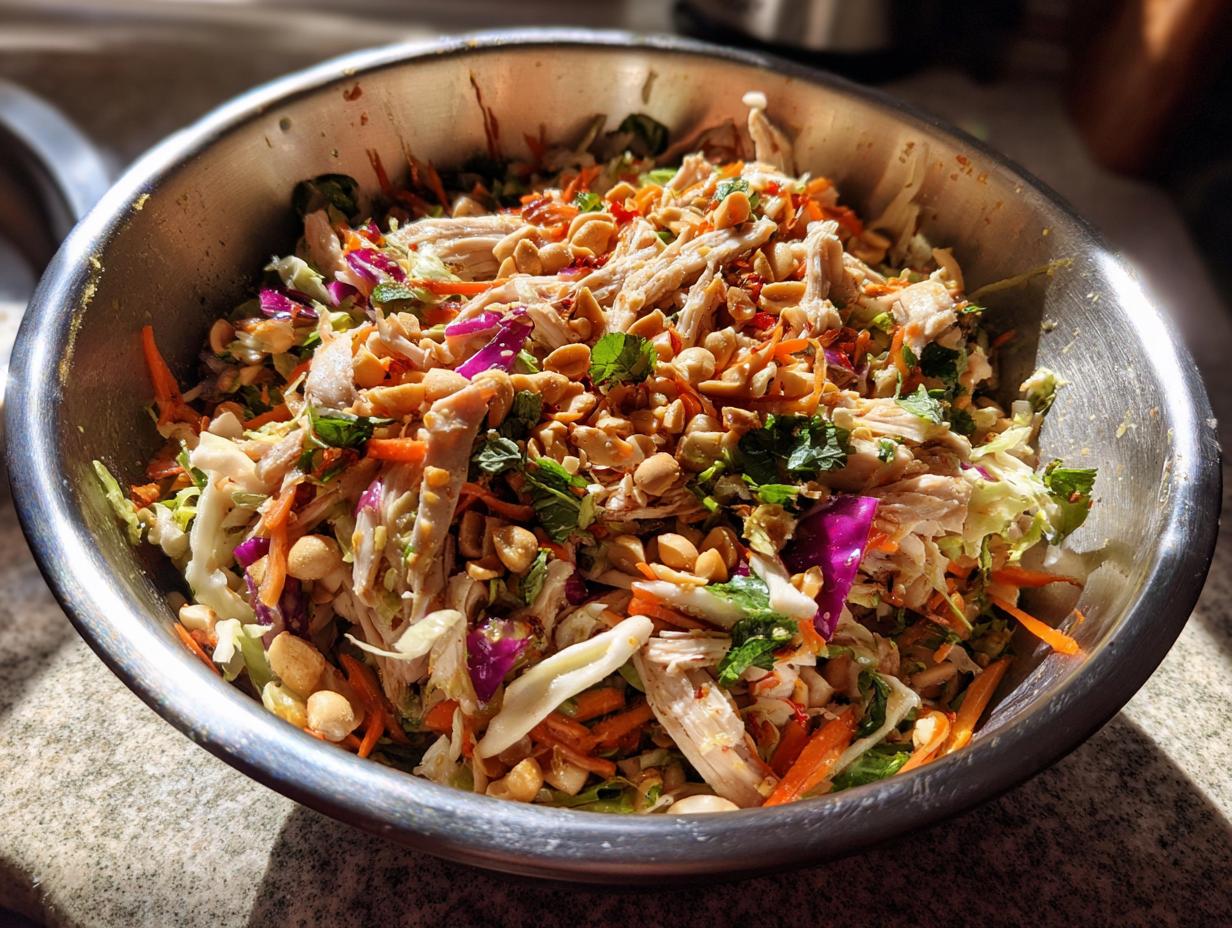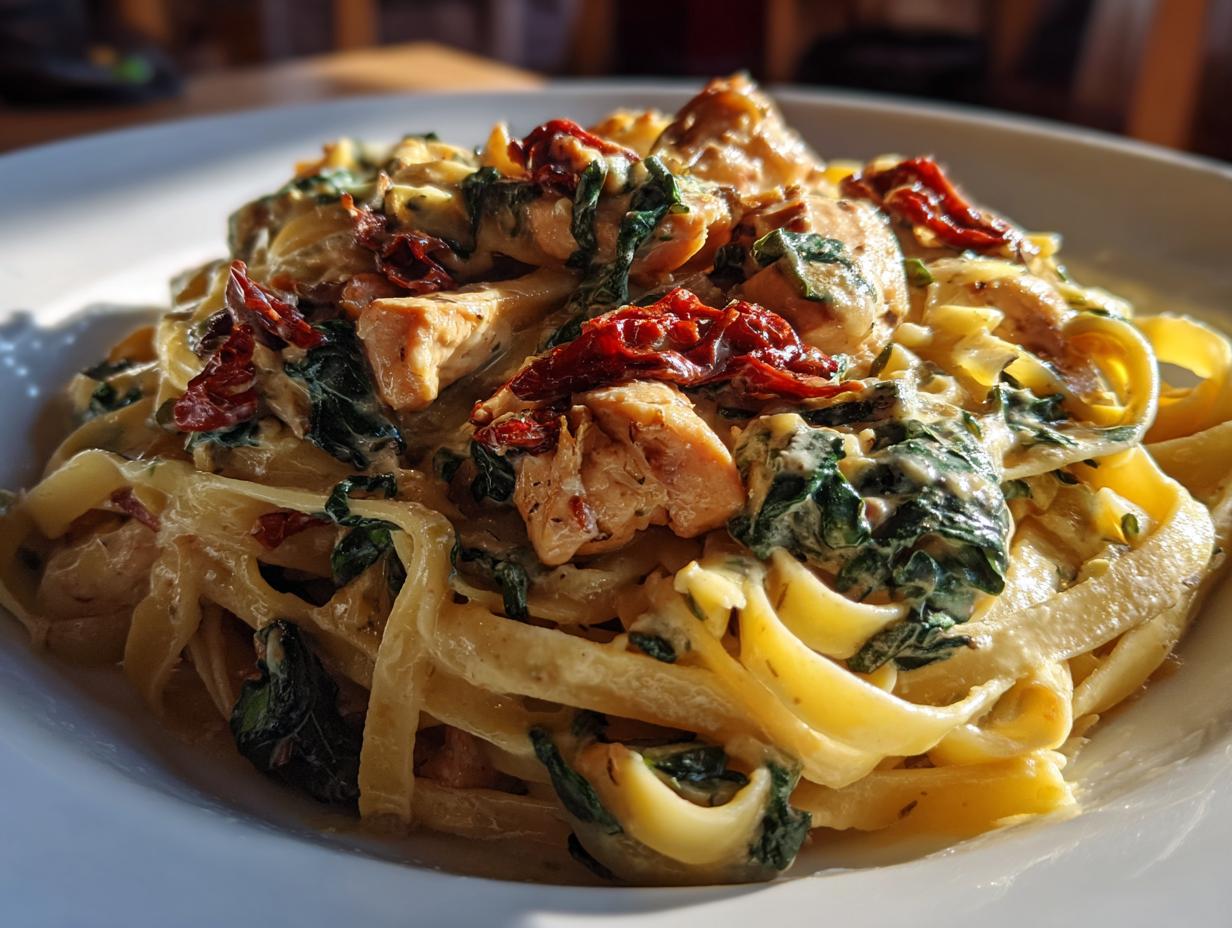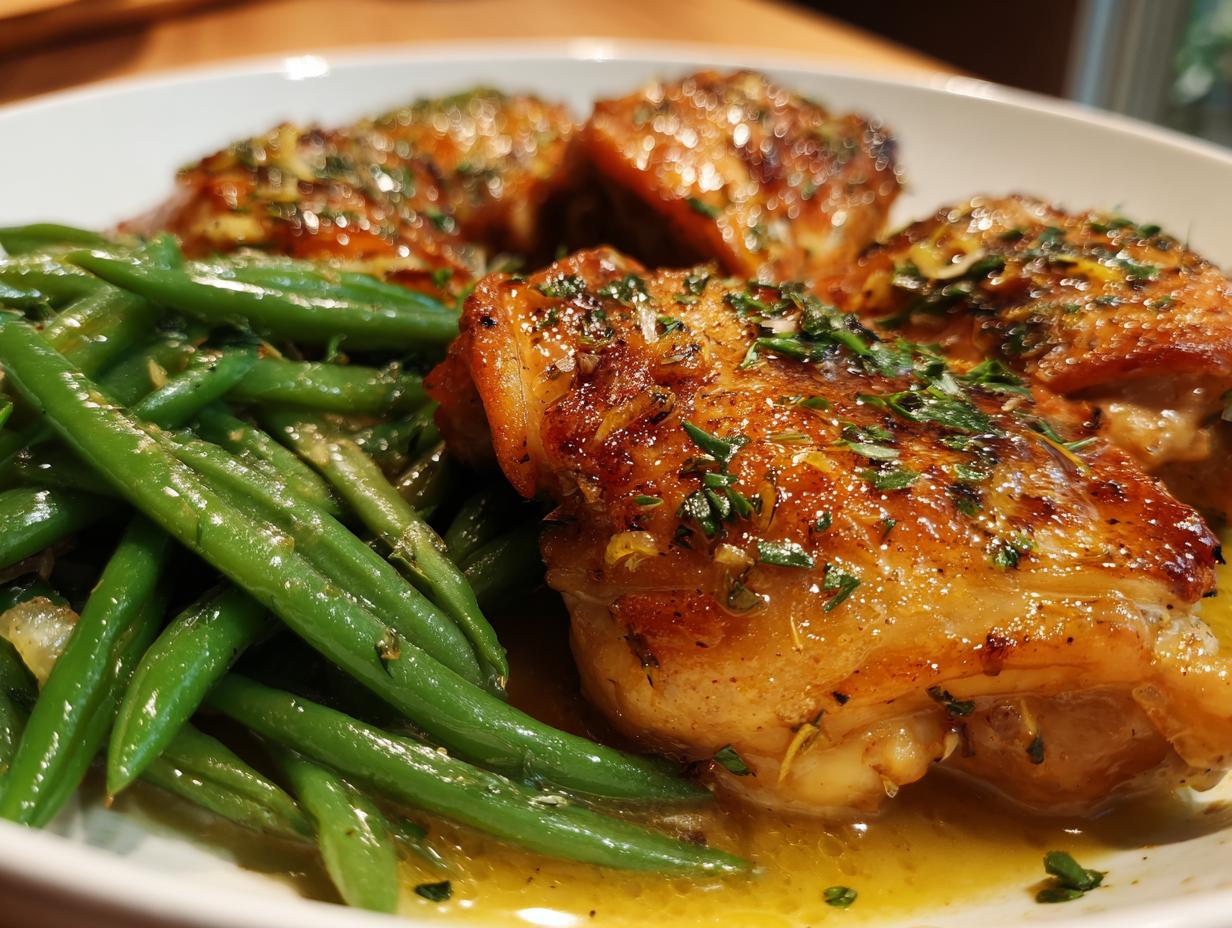Craving a tasty and nutrient-rich Brazilian dish that complements your Mounjaro (Tirzepatide) weight loss journey? You’re in the right place.
In this article, we’ll take a deep dive into the perfect balance of flavor and function. We’re blending the metabolism-boosting powers of apple cider vinegar (ACV) with the vibrant, hearty touch of traditional Brazilian cuisine — all tailored for those who are using Mounjaro for weight loss or blood sugar control.
We’ll explore the science, the cultural background, and of course, the full recipe, with tips on how to make it your own. By the time you’re done reading, you’ll know not only how to cook this dish, but also why it works so well for boosting energy, managing appetite, and staying on track.
So let’s get started with Part 1: a tasty introduction to this trending fusion.
What is a Brazilian Mounjaro Recipe with Apple Cider Vinegar?
Brazilian food is no stranger to bold flavors and healthful ingredients. Think lean proteins, spicy herbs, and fibrous veggies — all staples in the vibrant kitchens of Rio, Bahia, and beyond. But now, this cuisine is gaining new attention in the wellness world, especially when paired with the powerful benefits of apple cider vinegar and aligned with the dietary considerations of Mounjaro users.
Here’s what makes this combo worth your attention:
A Taste of Brazil, Reimagined
Traditional Brazilian meals often include grilled meats, beans, vegetables, and tropical fruits. These ingredients aren’t just flavorful—they’re packed with nutrients and often low in glycemic index, making them ideal for anyone managing blood sugar.
But in this recipe, we’ve given the classics a twist. We’re bringing in apple cider vinegar, a natural ingredient known for aiding digestion and supporting healthy blood sugar levels. It doesn’t overpower the taste — instead, it lifts the whole dish, adding a gentle tang and kickstarting your metabolism.
Why It Works for Mounjaro Users
Mounjaro (tirzepatide) is a game-changer in the world of GLP-1 receptor agonists. It helps regulate blood sugar and reduce appetite—but the right diet can take those effects to the next level. By combining high-fiber ingredients, healthy fats, and ACV, you can amplify its appetite-suppressing effects, stay full longer, and avoid insulin spikes.
As explained by the Cleveland Clinic in their overview of how Mounjaro supports weight loss, eating strategically around your medication can significantly impact your results. And this Brazilian-inspired dish is a perfect fit.
A Recipe That Supports Real Goals
Whether you’re aiming to shed pounds, balance blood sugar, or just eat more mindfully, this recipe checks all the boxes. It’s rich in plant-based fiber, protein, and slow-digesting carbs — not to mention packed with flavor that’ll have you coming back for more.
Plus, thanks to apple cider vinegar’s benefits, like improved digestion and stable energy (as outlined by Healthline), you’re getting more than just a meal. You’re fueling your body with a metabolism-supporting powerhouse.
The Rise of Functional Fusion Cooking
The real beauty of this dish lies in its fusion approach. It brings together science, tradition, and flavor—creating a new kind of recipe that’s just as effective as it is enjoyable. It’s not just about what’s on your plate—it’s about how every bite fuels your body’s healing and transformation.
Ready to get into the nuts and bolts of what makes this combo so powerful? Let’s dig into the key components in Part 2, where we break down the science behind Mounjaro and apple cider vinegar—and why they’re a match made in metabolic heaven.
What is Mounjaro (Tirzepatide) and Its Role in Weight Loss?
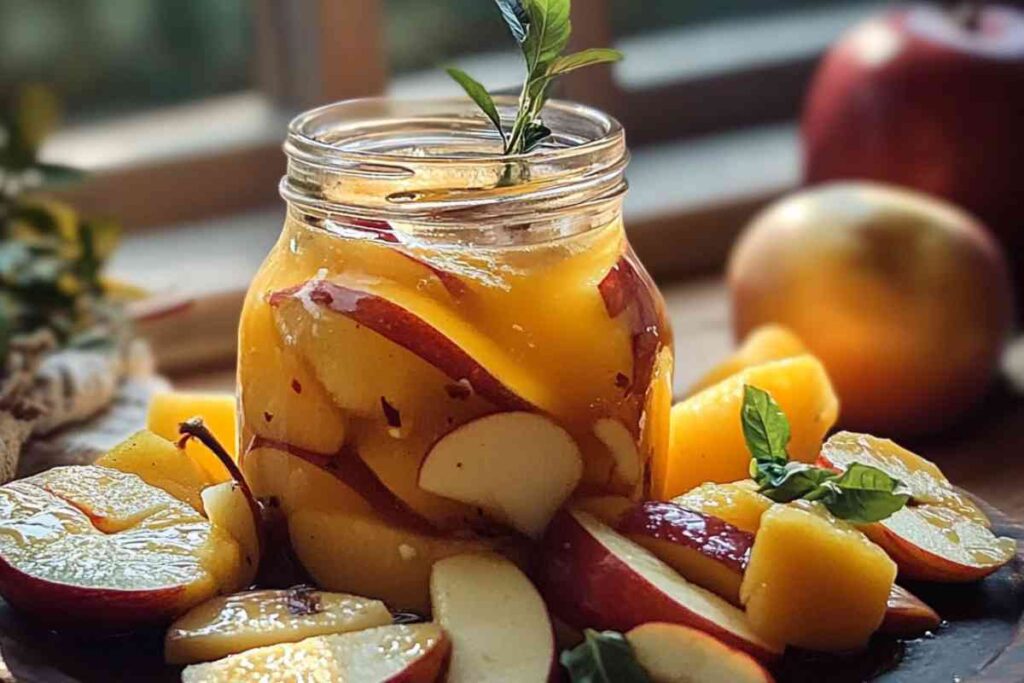
When it comes to modern weight loss breakthroughs, Mounjaro is definitely stealing the spotlight. But to make the most of it, it’s not just about the medication—it’s about what you eat alongside it. That’s where smart nutrition, like our Brazilian Mounjaro recipe with apple cider vinegar, really comes into play.
Let’s break it down and see why this duo is such a powerhouse.
How Mounjaro Works in Your Body
Mounjaro, also known by its generic name tirzepatide, is part of a revolutionary class of drugs called GLP-1 and GIP receptor agonists. Simply put, it mimics the hormones your body naturally releases after eating to help lower blood sugar levels, slow digestion, and curb appetite.
This triple-action effect doesn’t just help with diabetes—it also leads to significant weight loss. And when paired with nutrient-dense, low-glycemic meals, the effects can be even more powerful.
For a deeper look into how this medication functions, check out Cleveland Clinic’s explanation on how Mounjaro supports weight loss. They highlight how diet plays a crucial role in maximizing the medication’s benefits.
Why Diet Makes or Breaks Your Progress
While Mounjaro is doing its job regulating hunger hormones, the food you eat can either support or sabotage those efforts. That’s why building meals that are:
- Low in sugar
- Rich in fiber
- Packed with protein
- Enhanced with natural metabolism boosters (like apple cider vinegar)
…can create a positive feedback loop. You stay fuller, longer. You experience fewer energy crashes. And you help your body tap into fat-burning mode.
This is exactly what makes our Brazilian recipe with ACV such a game-changer. It’s tailor-made to work with your body’s new rhythm under Mounjaro—not against it.
What You Eat Really Matters
Too many folks think taking Mounjaro means they can eat whatever they want. But here’s the thing: pairing it with the wrong foods—high sugar, ultra-processed carbs, or saturated fats—can blunt its effectiveness.
Instead, choosing smartly-prepared meals with complex carbs, lean protein, and healthy fats enhances Mounjaro’s ability to:
- Control hunger naturally
- Balance your energy levels
- Improve insulin sensitivity
- Accelerate fat loss
And let’s not forget—apple cider vinegar brings its own zesty kick to the mix. According to Healthline’s article on the benefits of apple cider vinegar, it can help lower post-meal blood sugar and reduce belly fat over time.
The Power of Pairing: Mounjaro + ACV + Brazilian Ingredients
So why does this specific combo work so well? Here’s the magic:
- Mounjaro regulates your hunger and blood sugar.
- Apple cider vinegar helps with digestion and fat burning.
- Brazilian ingredients like beans, lean meats, and fresh produce provide the ideal fuel for sustained energy.
That’s a trifecta of wellness right there.
What Makes Brazilian Cuisine Ideal for Weight Loss?
Brazil isn’t just famous for Carnival, capoeira, and football—it’s also home to one of the most vibrant, health-friendly culinary traditions in the world. But here’s the kicker: traditional Brazilian meals naturally align with many of the nutritional needs of Mounjaro users, especially when you tweak them with intention.
So, what makes this cuisine so special? Let’s dig into the delicious details.
Lean Proteins and Fiber-Rich Staples
Brazilian plates are often a beautiful balance of protein, fiber, and healthy carbs. Take the classic feijoada—a black bean stew rich in iron and fiber. Or grilled chicken, a lean protein source commonly served with collard greens, cassava, or brown rice.
These foods digest slowly, helping to:
- Keep blood sugar steady
- Reduce post-meal cravings
- Maximize the appetite-suppressing benefits of Mounjaro
- Promote longer-lasting energy
And let’s not forget—fiber is your best friend when you’re trying to stay full and beat the snack attacks. That’s why dishes made with black beans, lentils, and native Brazilian grains are gold.
Whole Ingredients, Naturally
Brazilian home cooking is deeply rooted in farm-to-table culture. Meals often feature:
- Fresh vegetables like okra, carrots, peppers, and chayote
- Herbs like parsley, coriander, and oregano
- Healthy fats from olive oil, avocados, and Brazil nuts
- Complex carbs such as cassava flour, plantains, or brown rice
These whole ingredients aren’t just tasty—they’re loaded with essential nutrients, low in processed sugar, and great for blood sugar regulation.
When paired with apple cider vinegar, which helps slow down starch digestion, the effect is even more powerful. ACV has been shown to enhance insulin sensitivity, making it a smart addition to carb-containing meals.
Spice It Right: Thermogenic Additions
Brazilian cuisine uses flavor like a secret weapon. Ingredients like garlic, onion, pepper, and ginger aren’t just there for taste—they’re natural metabolism boosters. And when your metabolism is humming, it’s easier to shed stubborn weight.
Including anti-inflammatory herbs and thermogenic spices also supports gut health, which is key when you’re adjusting to tirzepatide.
From Tradition to Transformation
One of the coolest parts of Brazilian food? It’s deeply nourishing—both culturally and nutritionally. You’re not just eating for your goals; you’re connecting to a rich food heritage that prizes balance, community, and fresh, homegrown ingredients.
By slightly modernizing these meals—say, replacing heavy oils with olive oil or reducing excess salt—you can create weight-loss-friendly dishes that still feel like a warm hug from grandma’s kitchen.
Brazilian Mounjaro Recipe with Apple Cider Vinegar – Full Recipe

Alright, let’s cook up something that tastes amazing, supports blood sugar stability, and complements your Mounjaro lifestyle like a dream. This isn’t your average “health food.” It’s bold, beautiful, and bursting with Brazilian flair — and it’s got that apple cider vinegar edge that boosts digestion, helps curb cravings, and supports fat-burning.
Let’s dive into the ingredients, prep method, and what makes this dish metabolically magical.
Ingredients List (Locally Sourced + Smart Substitutions)
Here’s what you’ll need for 2 servings of this power-packed plate. Don’t worry — we’ll suggest easy substitutions to suit your diet or local grocery options.
Proteins & Base
- 1 cup grilled chicken breast (sliced thin) — or use lean turkey/tofu for variation
- ½ cup cooked black beans (unsalted, rinsed)
- ½ cup steamed brown rice or quinoa
Veggie Power
- ½ cup chopped kale or collard greens (lightly steamed or sautéed)
- ¼ cup red bell pepper (sliced thin)
- ¼ cup chopped tomato (fresh, not canned)
- ¼ avocado, diced (healthy fat and fiber)
Apple Cider Vinegar Marinade
- 1.5 tablespoons organic apple cider vinegar
- 1 tablespoon olive oil
- 1 garlic clove, minced
- ¼ teaspoon ground cumin
- 1 pinch of chili flakes (optional for heat)
- Salt and pepper to taste
- Juice of ½ lime (for brightness)
Optional Add-ins
- 1 tablespoon chopped cilantro or parsley
- 1 teaspoon grated ginger (anti-inflammatory punch)
- Sprinkle of flaxseeds or chia (extra fiber boost)
Step-by-Step Preparation Guide
This recipe isn’t just healthy — it’s fast, fun, and flexible. Here’s how to make it happen:
- Marinate the Protein:
In a bowl, mix apple cider vinegar, olive oil, minced garlic, cumin, chili flakes, salt, and pepper. Add the grilled chicken slices and let sit for 10–15 minutes. The ACV helps tenderize the meat while infusing flavor. - Sauté or Steam Veggies:
Lightly steam the kale and red pepper, or sauté in 1 tsp of olive oil for 3–4 minutes. Keep the texture slightly crisp for maximum nutrient retention. - Heat Beans and Rice:
Warm the black beans and brown rice separately. If you’re tight on time, use pre-cooked versions—just check for added salt or oils. - Assemble Your Bowl:
Start with a base of rice, layer on the beans and veggies, and top with your marinated chicken. Add avocado slices and optional herbs. - Final Drizzle:
Squeeze fresh lime juice over the top and give one last drizzle of any leftover marinade. - Serve Fresh:
Enjoy immediately for the best flavor and texture. This dish is packed with fiber, lean protein, and low-GI carbs — perfect for Mounjaro-supported weight loss.
Nutritional Breakdown Per Serving
Here’s a rough estimate of the macro profile (may vary slightly based on substitutions):
- Calories: ~420 kcal
- Protein: 32g
- Fiber: 12g
- Fat: 14g (from avocado and olive oil)
- Carbohydrates: 35g (mostly from beans and brown rice)
- Glycemic Load: Low to Moderate
This balance keeps post-meal blood sugar in check, supports sustained energy, and promotes satiety — all of which are crucial while using tirzepatide.
How to Modify the Recipe for Different Diets
One-size-fits-all? Nope — not here. The beauty of this Mounjaro-friendly Brazilian dish is how flexible it is. Whether you’re going full keto, leaning into plant-based living, or just trying to balance your macros better, there’s a version of this meal that’ll suit your style and your goals.
So let’s remix the recipe and unlock its full potential for your personalized wellness path.
Low-Carb / Keto Adaptation
If you’re focused on fat-burning and blood sugar stability, going low-carb might be your jam. Luckily, this recipe adapts beautifully:
- Swap the brown rice for:
- Riced cauliflower
- Shredded zucchini sautéed in olive oil
- Shirataki noodles (for a noodle bowl vibe)
- Bump up the fats with:
- More avocado
- Chopped Brazil nuts (bonus selenium!)
- A drizzle of MCT oil or olive oil
- Reduce or remove:
- Beans (they’re nutritious but carb-heavy)
- Starchy vegetables like plantains or corn if used
These changes create a meal that’s low in net carbs but still rich in flavor and loaded with fiber, antioxidants, and good fats. Perfect if you’re using Mounjaro and want to optimize insulin sensitivity.
Plant-Based or Vegan Option
No meat? No problem! Brazilian cuisine actually has tons of plant-powered roots. Here’s how to make this recipe 100% vegan without losing the benefits:
- Replace the chicken with:
- Grilled tempeh or tofu (marinated in the same ACV blend)
- Sautéed mushrooms with black pepper and lime
- A chickpea patty or lentil loaf slice
- Boost your protein with:
- Hemp seeds, quinoa, or spirulina powder
- A scoop of plant-based protein (stirred into beans or dressing)
- Use coconut aminos instead of salt for a more rounded umami taste
Apple cider vinegar still shines in the marinade and dressing, supporting digestive enzymes and offering that metabolic edge even on a fully plant-based plate.
High-Protein Power-Up
Trying to hit higher protein goals? Whether you’re building muscle or just want to stay extra satiated while on tirzepatide, these tweaks will bulk up the protein punch:
- Double up on lean protein:
- Add extra grilled chicken or turkey
- Mix in boiled eggs (sliced on top)
- Include a scoop of plain Greek yogurt or cottage cheese on the side
- High-protein grain swap:
- Use quinoa instead of brown rice
- Add edamame or lupini beans for a fiber + protein boost
And let’s not forget — maintaining muscle mass while losing fat is crucial, especially with medications like Mounjaro that can reduce appetite and total calorie intake.
Spice & Herb Add-Ons for Extra Benefits
Looking to boost those thermogenic effects and dial up the anti-inflammatory benefits? Add these:
- Fresh ginger or turmeric: Adds warmth, fights inflammation
- Paprika, cayenne, or black pepper: Mild fat-burn boosters
- Parsley and cilantro: Detox-friendly and refreshing
These not only elevate the flavor but also help support digestion and metabolism, which is what you want while taking Mounjaro.
Your plate, your rules. These customizations keep the dish aligned with your dietary needs without sacrificing the cultural essence or nutritional integrity. And the best part? You’re still keeping it in that sweet spot of balanced macros and low glycemic load.
When and How to Eat This Recipe While on Mounjaro
If you’re already on Mounjaro or just starting your journey, you’ve probably noticed it changes more than your appetite — it shifts your entire relationship with food. You feel full faster. Cravings ease up. Sometimes, eating even becomes something you have to remind yourself to do. So, how do you time your meals to work with the medication and not against it?
Let’s break it down.
Ideal Meal Timing: What the Experts Suggest
While there’s no universal rule for all Mounjaro users, many nutritionists suggest syncing meals with your medication’s peak action window. Here’s the general idea:
- Mounjaro is usually taken once a week, and its effects can start to show within a few hours and last for several days.
- Appetite suppression is typically strongest 12–48 hours post-injection, which means you may feel less hungry during that window.
So, when should you eat the Brazilian ACV recipe?
Best time to eat this dish:
- During lunch or early dinner, especially on days when your appetite is returning
- As a main meal on injection day, because it’s nutrient-dense, filling, and easy on the stomach
- Right before workouts or physical activity, to supply sustained energy without spiking your blood sugar
How Often Can You Eat It?
Good news: this dish is safe and balanced enough to eat multiple times a week—and it never gets boring thanks to the variation options we shared in Part 5. Here’s why it works great as a repeat meal:
- It’s low in sugar
- It offers a steady energy release (thanks to low-GI ingredients like quinoa, beans, and brown rice)
- It supports gut health and digestion through the use of apple cider vinegar
Still, variety is important for both nutrition and enjoyment. You can switch out the protein or greens, rotate your carb source, or even serve it as a wrap or salad.
Mindful Eating on Mounjaro: A Few Tips
Let’s be honest—eating while on tirzepatide isn’t always intuitive. Here’s how to stay on track:
- Eat slowly and chew thoroughly. Mounjaro slows gastric emptying, so eating too fast can cause bloating.
- Don’t skip meals. Appetite may be low, but your body still needs nutrients—especially protein and fiber.
- Stay hydrated. Sometimes thirst feels like hunger. Sip water throughout the day, especially before meals.
- Use small plates. It tricks your brain and helps you avoid overeating when your satiety signals are strong.
Bonus Tip: ACV for Appetite Regulation
Adding apple cider vinegar to your meal—especially when consumed before or with food—can help steady blood sugar levels and reduce post-meal spikes. According to Healthline’s research, ACV improves insulin sensitivity and slows the rate at which food leaves your stomach.
That means it pairs perfectly with the effects of Mounjaro, working in tandem to help you feel satisfied on smaller portions.
Eating isn’t just about fuel — it’s also about rhythm, hormones, and understanding what your body needs when it needs it. With this dish, you’re checking all the right boxes: balanced macros, blood sugar support, digestive aid, and flavor that keeps you coming back.
Research Behind Apple Cider Vinegar and Mounjaro-Compatible Diets

You’ve seen the flavors, felt the flexibility, and maybe even tried the recipe by now — but let’s pause for a second and ask the big question: Does the science back it all up?
Spoiler: Oh yeah, it does.
Whether we’re talking about apple cider vinegar, GLP-1 medication support, or the metabolic value of Brazilian ingredients, studies consistently show that this combination hits the sweet spot for sustainable, real-world weight loss.
Let’s dive into the receipts.
Apple Cider Vinegar: A Metabolism-Smart Secret
ACV isn’t just a trendy pantry item. It’s a time-tested functional food with real, measurable effects on blood sugar and appetite.
According to Healthline’s research on the benefits of apple cider vinegar, ACV:
- Improves insulin sensitivity after meals
- Reduces blood sugar spikes, particularly after carb-heavy dishes
- Slows gastric emptying, helping you stay fuller, longer
- May reduce fat storage, especially in the abdominal area
These benefits are especially valuable for Mounjaro users, since tirzepatide also slows digestion and reduces hunger. The synergy between the two can lead to amplified satiety, smoother blood sugar control, and more efficient fat burning.
Plus, when ACV is combined with low-glycemic ingredients like black beans, brown rice, and leafy greens — staples of Brazilian cuisine — its effects are even more pronounced.
Mounjaro and the Power of Smart Eating
Mounjaro (tirzepatide) isn’t magic — but when paired with the right foods, it kind of feels that way.
As highlighted by Cleveland Clinic, Mounjaro works by mimicking two hormones: GLP-1 and GIP. These hormones:
- Help control blood sugar
- Suppress appetite
- Promote weight loss by targeting hunger pathways in the brain
But here’s the thing: the effectiveness of Mounjaro increases significantly when paired with the right dietary approach. And that’s where this Brazilian recipe shines.
Eating balanced meals high in fiber, lean protein, and healthy fats — with just enough slow carbs — enhances the medication’s impact. You feel fuller, maintain better energy, and avoid the dreaded blood sugar rollercoaster.
Why Brazilian Food Fits the Bill
Traditional Brazilian ingredients offer a low-glycemic, whole-food alternative to processed Western diets. Dishes based on beans, grilled lean meats, veggies, and whole grains are rich in:
- Micronutrients like magnesium, potassium, and B-vitamins
- Soluble fiber, which supports blood sugar stability
- Plant-based protein for muscle maintenance
Combined with the ACV-enhanced digestion and the appetite control of tirzepatide, these ingredients form the nutritional trifecta for:
✅ Sustainable fat loss
✅ Improved gut health
✅ Consistent energy levels
✅ Better hormonal balance
What the Experts Say
Nutritionists and functional medicine practitioners are increasingly recommending meals like this one — functional, flavorful, and blood-sugar balanced.
While studies are still emerging on how specific cuisines interact with medications like Mounjaro, early research is pointing in a clear direction: real food matters. The more whole, unprocessed, and culturally balanced your meals are, the better your body responds.
This is where fusion cooking — like Brazilian meals tailored for Mounjaro — becomes more than just trendy. It becomes transformational.
FAQs About Brazilian Mounjaro Recipe with Apple Cider Vinegar
Let’s be honest — when something sounds this good (a tasty Brazilian dish that helps you lose weight?), folks naturally have questions. Whether you’re curious about ACV safety or wondering how often you can eat this, we’ve got your answers, served fresh and easy to digest.
Is it safe to combine Mounjaro with apple cider vinegar?
Absolutely — they actually complement each other perfectly, creating a powerful synergy for your wellness goals. Both Mounjaro (tirzepatide) and apple cider vinegar are known to slow down digestion and support better blood sugar control. However, balance is key. Stick to 1–2 tablespoons of ACV per day, preferably diluted or mixed into food (like in our recipe), to avoid stomach irritation.
And of course, if you have digestive issues or acid reflux, it’s best to consult your healthcare provider before making ACV a regular part of your diet.
Can this recipe help speed up weight loss?
It definitely supports it. The recipe combines several elements proven to enhance fat loss and appetite regulation, especially when paired with Mounjaro:
- Apple cider vinegar helps stabilize blood sugar
- Fiber-rich black beans and greens aid digestion and satiety
- Lean protein supports muscle retention during fat loss
- Low-glycemic carbs prevent insulin spikes
Remember: weight loss isn’t about hacks — it’s about consistency. Eating meals like this regularly can help create a sustainable calorie deficit and reduce cravings without feeling deprived.
How often can I eat this dish?
Honestly? It’s so nourishing and balanced, you could easily enjoy it 2–3 times a week without thinking twice. It’s balanced, nutrient-dense, and full of ingredients that support metabolic health. Plus, with all the variations we outlined in Part 5, it never gets boring.
Want to go plant-based this week? Swap the chicken for tempeh. Need a low-carb night? Bring on the cauliflower rice. The versatility makes this recipe perfect for rotation.
What if I don’t like the taste of apple cider vinegar?
Totally fair — ACV isn’t everyone’s jam. But here’s the trick: in this recipe, the vinegar is balanced out by olive oil, garlic, and lime juice, creating a tangy, zesty flavor that’s way more subtle than sipping it straight.
Still not feeling it? Try these workarounds:
- Use less vinegar (start with ½ tablespoon)
- Blend it into a creamy avocado dressing
- Swap it for lemon juice or balsamic vinegar (just go light)
While ACV adds a metabolism kick, the rest of the ingredients are already doing plenty of heavy lifting for your health.
Are there Brazilian spices or herbs that help with metabolism?
Absolutely! Traditional Brazilian cuisine includes some natural thermogenic and anti-inflammatory gems:
- Ginger – boosts digestion and fat burning
- Garlic – helps regulate blood pressure and supports immunity
- Cayenne pepper – mildly increases metabolic rate
- Parsley & cilantro – detox-friendly and full of antioxidants
- Cumin – supports gut health and reduces bloating
Adding these to your version of the dish doesn’t just boost flavor — it can also enhance your weight loss efforts naturally.
Final Thoughts — Incorporating the Recipe into Your Wellness Plan
Here’s the thing: eating well doesn’t have to feel like punishment. With this Brazilian Mounjaro recipe featuring apple cider vinegar, you’re not just mixing ingredients—you’re nourishing your body, celebrating tradition, and staying aligned with your long-term health journey.
And honestly? That’s a recipe worth keeping on repeat.
Make It a Staple, Not a Struggle
The reason this dish works so well is because it strikes that sweet spot between delicious and functional. It doesn’t taste like a “diet meal.” It tastes like something you’d eat on a sun-drenched afternoon in Salvador — except now, it’s designed to work in sync with your Mounjaro regimen, your blood sugar balance, and your weight loss strategy.
Want to build consistency? Here’s how:
- Meal prep it once or twice a week in batches
- Rotate proteins (chicken, tofu, tempeh, shrimp) to keep it fresh
- Keep ACV-based dressings ready in a mason jar for quick drizzle power
- Use it as your go-to lunch or light dinner on busy days
- Mix and match it with soups, salads, or wraps
Because the truth is, consistency doesn’t come from complexity. It comes from having simple, repeatable meals you actually look forward to.
A Recipe That Evolves With You
Whether you’re just starting Mounjaro, adjusting to its appetite-suppressing effects, or hitting a weight-loss plateau, this recipe can grow with you. Need more protein? Add an egg. Watching your carbs? Swap in zucchini noodles. Feeling adventurous? Try a spicy coconut twist using traditional Bahian seasoning (without the heavy oil, of course).
It’s not just a recipe — it’s a foundation.
And in a world full of crash diets and flavorless food plans, this one stands out. It honors culture, it respects your body’s needs, and it fits beautifully into the rhythm of your wellness journey.





